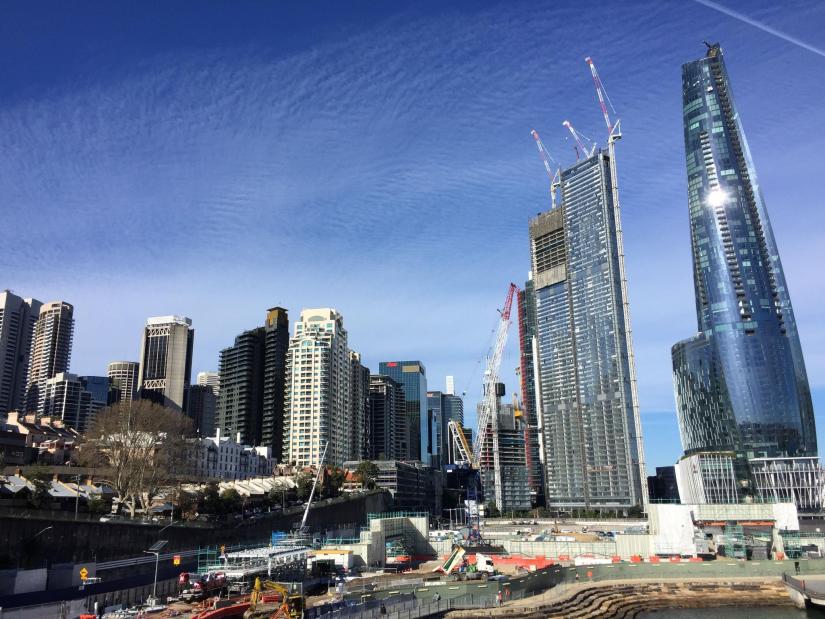The summary field is optional but important. Use it to summarise your page in 20 words or less.
Semir’s Drupal intro training page
Content is the most important component of our website.
This is the body text field, where the main part of your page content goes.
When writing for the web, using plain language allows users to find what they need, understand what they have found, and then use it to meet their needs.
The seven Cs of content quality
James Mathewson identifies seven features that will help you to write readable and engaging content.
- Client-centric: Quality content is not about what you want to write. It's about what your audience need to read
- Compelling: Web users typically scan the page and only read if they see words that are obviously relevant to them
- Credible: Everything you write needs to have solid evidence behind it
- Concise: Give web users the information they need in the smallest possible time
- Clear: Clarity is also in the eye of the beholder. And that's really the most important point
- Conversational: On the web, nothing turns an audience off faster than writing that sounds mechanical
- Clean: Make sure you proofread and have someone else proofread for you before you publish
Structuring content
When designing your content, keep the following in mind:
- have a clearly defined goal for each page
- be clear and succinct, no repetition
- break up big chunks of text by using short paragraphs (chunking) and adding headings and subheadings to enhance scannability.
- ensure keywords are in the headings and main text.
A bit about links
- Link to something only if it helps meet the user's need
- Write link text that is meaningful and makes the destination clear
- Don't set links to open in another tab or window
- Create internal links to support the user's journey
- Add the document type, file type and size when linking to files
Semir's Training File (PDF)
If you learn your audience's needs and pain points, you have a chance of creating high-quality content for them.
— James Mathewson
Content development process
Step 1: Content and audience identification
- Identify the information that is required and the purpose for publishing it.
- Ensure that the information has not been published elsewhere on the UTS web.
- Identify who the audience(s) are and their particular needs.
Step 2: Publication and ongoing maintenance
- Determine and document ongoing maintenance requirements.
- Publish content.
- Maintain your content: keep the info current, accurate and relevant and undertake regular quality assurance checks.
Accessibility
Under the Disability Discrimination Act 1992 we are legally required to ensure that people with disability have the same fundamental rights to access information as the rest of the community.
Images
Two important notes about images:
- Alt text replaces the element whenever the element can't be seen by the user or displayed on the screen.
- Check the copyright of your image and attribute accordingly.

Buildings at Barangaroo (photo credit: Semir Cerkic)
The Dr Chau Chak Wing Building is the first Australian building designed by Frank Gehry, one of the world's most celebrated architects. Photo by Tom Hanks.
Image sizes

Photographer: Kim Smith
When you add an image to the body field, you have four image sizes to choose from:
- Generic: The maximum size. Upload images that are at least 2000 pixels wide. 4000px wide is best.
- 250px: Good for decorative shots. Upload images that are at least 500 pixels wide
- 150px: Good for individual headshots. Upload images that are at least 300 pixels wide
- 50px: Good for icons such as social media. Upload images that are at least 100 pixels wide.
Videos
Multimedia files must be published with a transcript.

[Upbeat electronic music]
Wherever you are at UTS, safety comes first – it’s everyone’s responsibility.
Security staff are in most key buildings to help maintain a safe and healthy environment for students and staff.
But we need your help to keep our campus safe.
Call us straight away in an emergency. Or contact us from an Orange Help point.
Incidents, thefts or security problems should all be reported.
Security staff are first-aid trained and can help with injuries or illness.
Because emergencies sometimes happen, make sure you’re prepared. Check out the emergency procedure signage, especially in areas you visit frequently. Know how to find your closest exit and assembly area.
In a blackout, look for emergency lighting and follow the bright green signs to the exits.
If there’s an emergency, you’ll hear two different alarm sounds.
BEEP BEEP BEEP means prepare to evacuate. Turn off gas, flames or equipment that could be dangerous if left unattended.
WHOOP WHOOP WHOOP means you must evacuate the building.
Don’t try and leave the way you came in – make sure you follow the green emergency signs and move quickly to the nearest fire exit.
Don’t use the lifts, it might not be safe. Use the fire stairs.
Follow the direction of wardens wearing red hats, as well as security staff.
Check if others need assistance. If they do, help them move to the fire stairs or the fire stairs door. Then, contact Security staff or emergency services to report where they are.
Fire curtain are installed in Building 2, at the escalators and Double Helix Staircase, outside the Hive Superlab, and in the Library
If a fire curtain is closing in front of you, just go back the way you came. Then, follow the green emergency signs to the fire exit. Just push on the door – it’ll be unlocked in an emergency.
After evacuating, don’t stand near building exits.
Don’t go back inside until you get the all-clear from a Security Officer or emergency services.
Look after yourself and others in an emergency with these simple tips.
[Upbeat electronic music]
Questions?
If you have questions about using Drupal or want to know more about web guidelines, contact us via our web request form on ServiceConnect.
